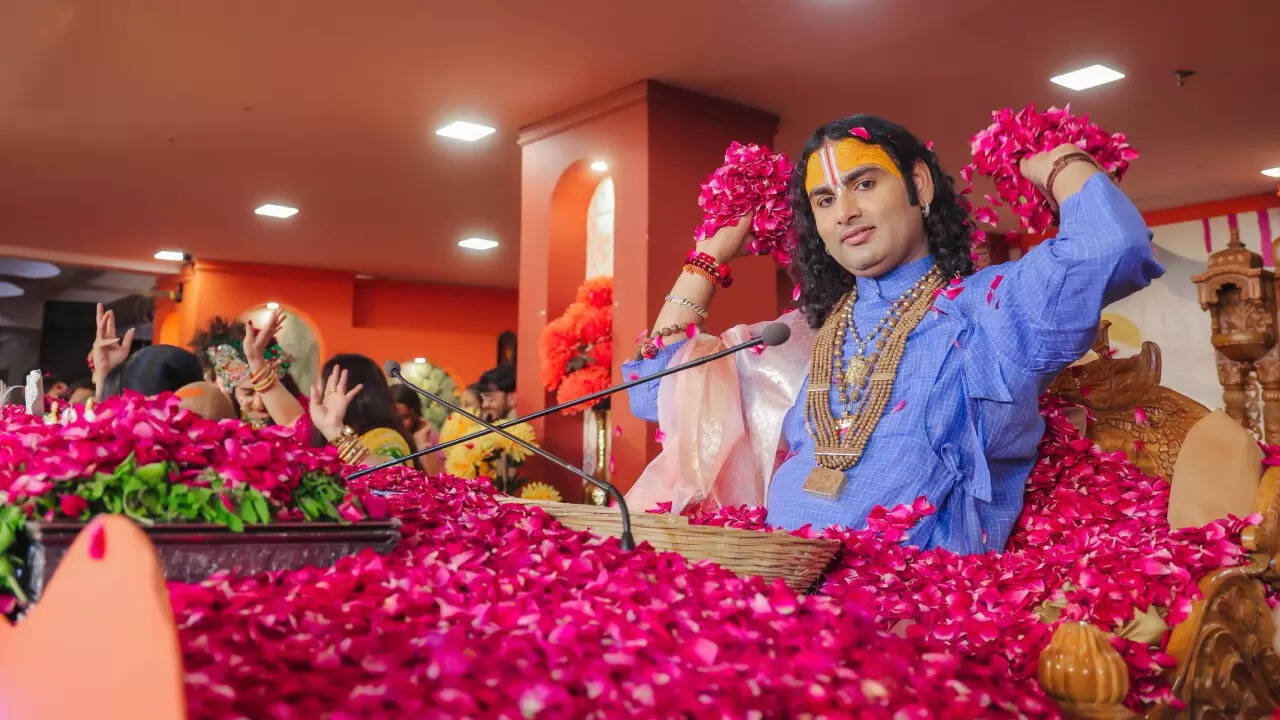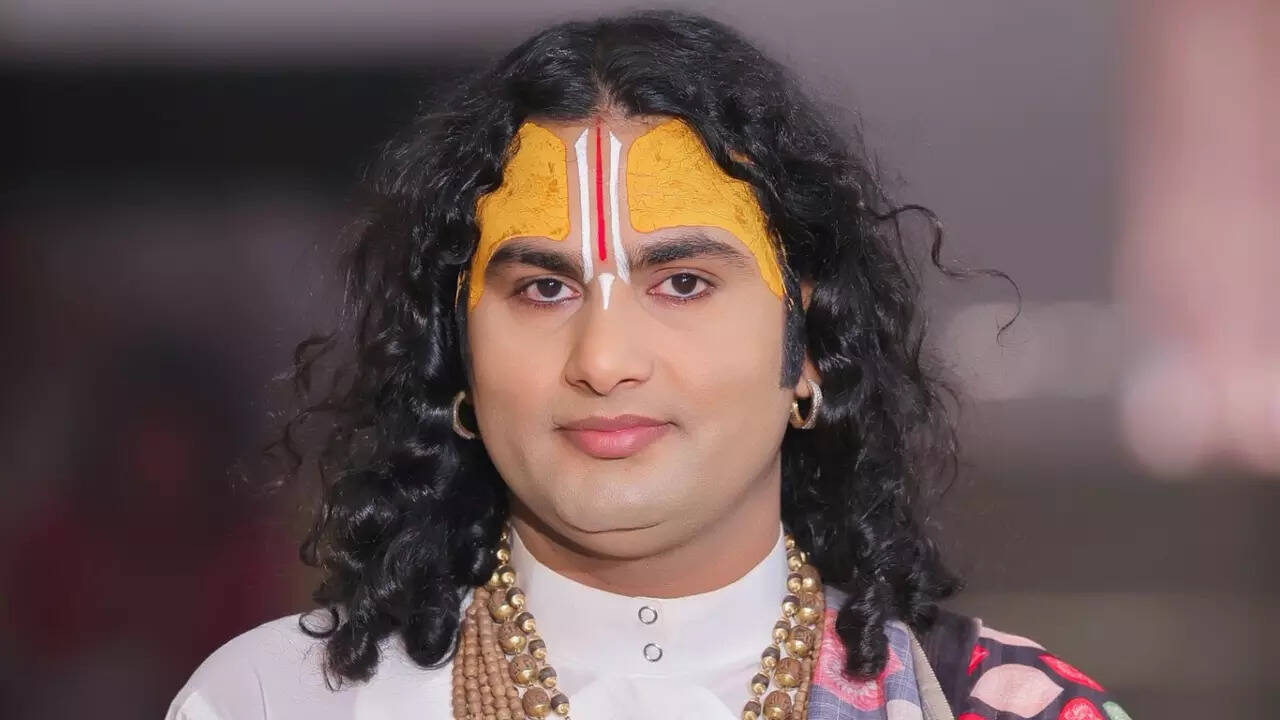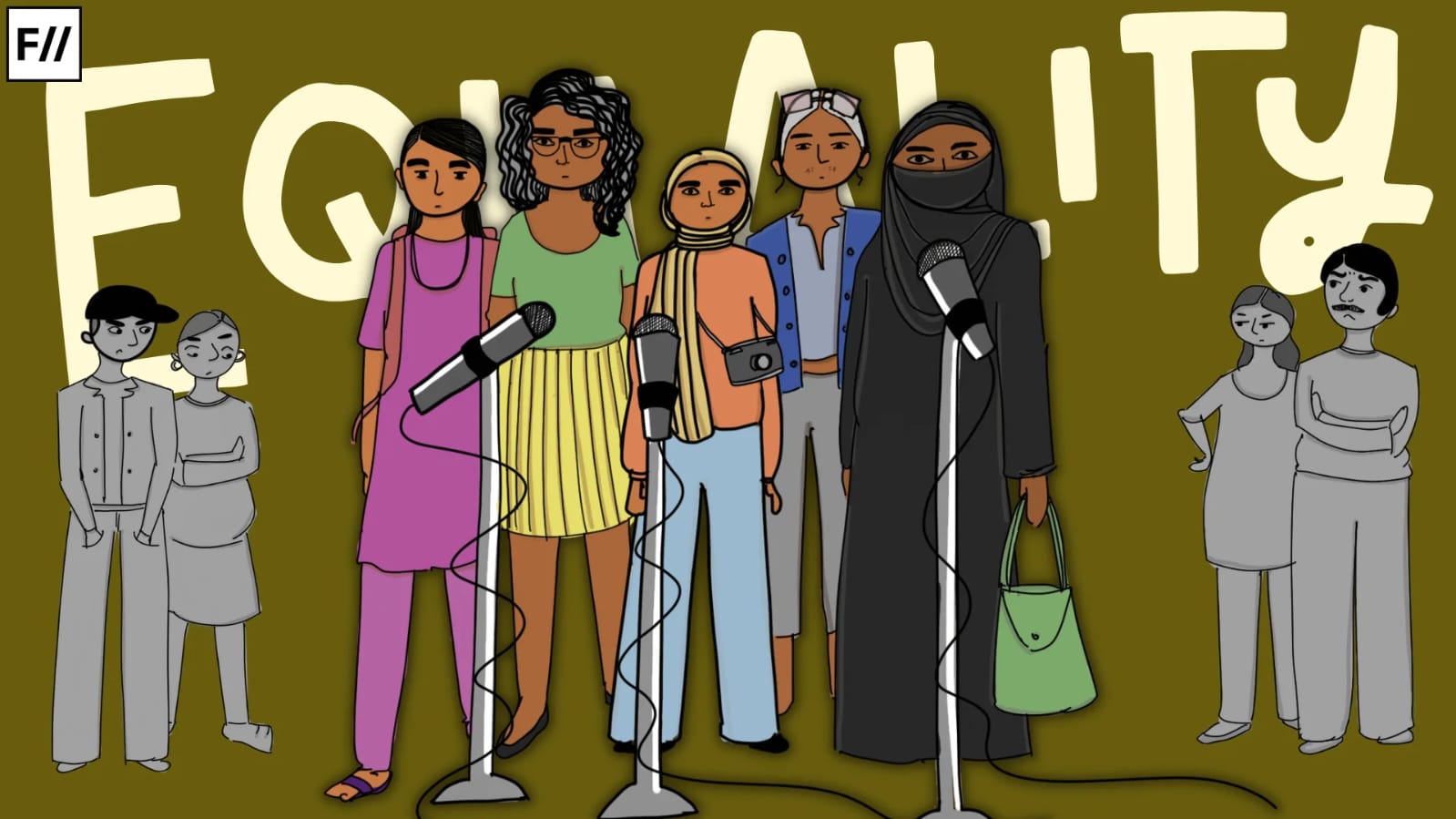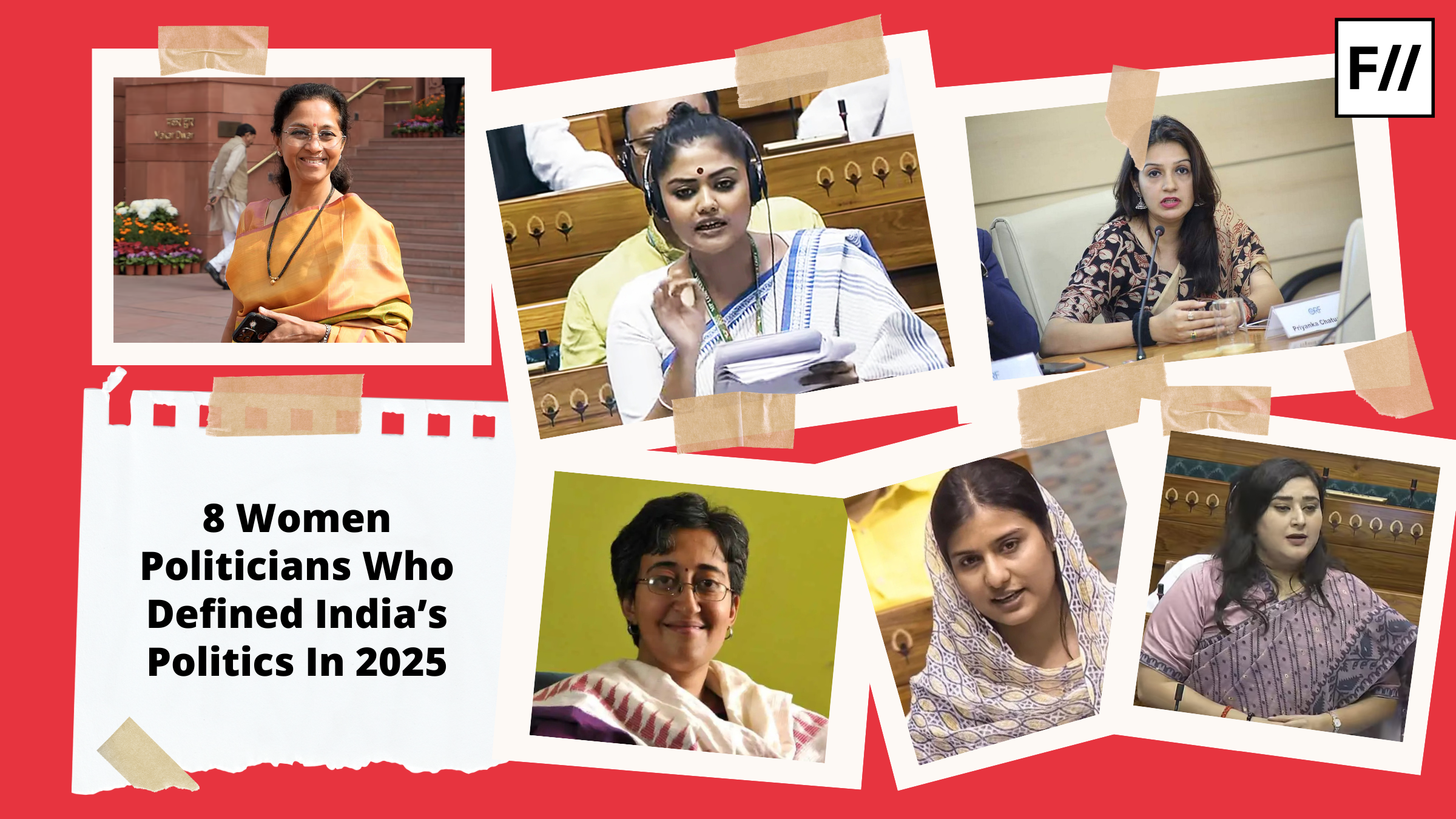Recently, Premanand Maharaj (born Anirudh Kumar Pandey), a popular religious leader, made a statement about marital purity, accusing most women of being impure. Premanand said, ‘Out of a hundred women, only four women who have lived a pure life can remain dedicated to one man.’ A viral video captured Vrindavan’s spiritual leader, Premanand Maharaj, making remarks about the “impurity” of young women today, suggesting that most are romantically or sexually involved and thus “impure”, with only a few “pure” women remaining. Previously, other religious leaders like Aniruddhacharya, aka ‘Pookie Baba’, also made remarks targeting sexual choices of women, stating that men are bringing home 25-year-old women who have, according to him, “been with multiple partners”.
Both comments have received backlash from feminist and egalitarian masses owing to their sexism. However, it is important to dive deeper and trace the origins of such sexist interpolations and the problematic social implications of such remarks and how they continue to shape the social sphere patriarchally by invoking moral discourse around sexuality.’
Binary construction of female sexuality
‘The first implication of such remarks is the reproduction of the binary of women’s conduct. As mainstream religions have commonly constructed women’s worth around sexual purity. Women are often characterised in binaries, either as untrustworthy temptresses or chaste, submissive mothers. This dynamic is bolstered by sermons and guidance offered by religious authorities, where even everyday behaviour and conduct (dress, associational freedoms) can come under religious censure.

In the first instance, it seems to be an appreciation of the ‘moral’ sexual conduct of women and men. However, this appreciation has two major problems. First, the value of a woman is reduced to her sexual purity, putting the content of her conscience, knowledge, and dignity secondary to her chastity. Second, it becomes inevitable and legitimate to ridicule and exclude the ‘impure’ from the moral and sacred spheres.
Women have traditionally been viewed through a dichotomous framework of the untrustworthy, sexually and morally questionable temptress or the submissive, chaste maternal figure.
Women have traditionally been viewed through a dichotomous framework of the untrustworthy, sexually and morally questionable temptress or the submissive, chaste maternal figure. Nowhere is this more strikingly obvious than in the Christian Bible, with its two significant female figures: Eve and the Virgin Mary (Lam, 2007). These two opposing archetypes deny women agency and autonomy, reducing them to instruments of the male moral order. Women who express autonomy, whether through clothing choices, romantic relationships, or sexual agency, are vilified as threats to societal order, while submissiveness is idealised as virtuous.
This control over sexuality is articulated in terms of purity and chastity. Moreover, this preference for purity among partners differentially impacts men and women in heterosexual relationships, where women are socialised to internalise guilt and fear about their bodies, while men are subtly or overtly excused for sexual curiosity. For example, Premanand Maharaj’s comments implicitly equate sexual experience with impurity, feeding directly into such binaries.’
Undermining women’s agency
‘Such comments often moralise women’s sexuality without accountability for their consequences. The result is a gender order in which women become both the bearers of moral downfall and the guardians of communal honour, neither role autonomously chosen. Preaching and advocating purity-based discourse takes away women’s agency regarding marriage, limiting their ability to get divorced. It even makes monogamy virtuous, preferable, and moral, thus forming the basis of marriage as a sacrament that can never be called off, depriving women of their freedom.

The punishment for deviating from ideals arises from multiple fronts. For instance, a woman viewed as promiscuous may be greeted with significant social derision and attacked with labels that reduce her credibility and perceived ‘worth’. In sexual assault trials, female victims are often as much on trial as the accused. Furthermore, divine legitimacy makes it more troubling, as justice becomes elusive when this discrimination is divinely mandated. Women are silenced not only by law or family but also by the weight of sacred authority. In such contexts, seeking redress can be seen as challenging God’s will, making dissent spiritually transgressive and sinful.
Such comments often moralise women’s sexuality without accountability for their consequences. The result is a gender order in which women become both the bearers of moral downfall and the guardians of communal honour, neither role autonomously chosen. Preaching and advocating purity-based discourse takes away women’s agency regarding marriage, limiting their ability to get divorced.
This instance from the Ramayana, where Rama behaves irresponsibly towards Sita by delaying going to meet her and, when he finally does, ends up questioning her chastity, suggests that warring with Ravana had more to do with his own honour than protecting his wife. In response, Sita calls Rama ‘lowly’ before undertaking the trial by fire. On returning to Ayodhya, Rama attempts to salvage his reputation from public censure by abandoning his wife rather than defending her innocence (Rege, 2013).’
Upholding the patriarchal control of women’s sexuality
Such preachings can also be contextualised as mechanisms of social control on women and their sexuality, as Ambedkar pointed out how endogamy had to be enforced to maintain the caste order and that it was necessary to control the sexuality of women. These remarks seem to be a continuation of the Laws of Manu, as he preached: ‘X. 2. Day and night, women must be kept in dependence by males (of their families), and if they attach themselves to sexual enjoyment, they must be kept under one’s control (Manusmriti, as cited by Ambedkar).’ and ‘X. 45. The husband is declared to be one with the wife, which means that there can be no separation once a woman is married.’

Remarks by sacred authorities translate patriarchal social imagination into social laws and legitimise unequal gender relations. It induces patriarchal conduct that gains legitimacy from religion, as was the case with Manusmriti. Some might argue that such remarks are more about maintaining inner purity, as sexual activity might morally degrade the conscience. However, contrary to this, none of these religious authorities or mainstream religions would want women to follow celibacy, which would depart from the social role of mother and wife reserved for them. Thus, religious authority enables repeated marital sexual activity but harshly condemns any consensual, non-monogamous relationship as a sign of degradation, not because of the harm caused, but because it falls outside the prescribed structures of control and property. One can even question the preachers of purity for their silence on non-consensual marital intercourse or marital rape. Does that not degrade husbands or men?
Celibacy in some traditions does serve as an ideal, but for the majority of mainstream religious discourses on sexual purity, the danger is constructed around non-monogamous liaisons, especially those outside the sanction of marriage. These discourses rarely prioritise genuine concern for women’s well-being or any supposed “evil consequences” of sexual activity; instead, they encode a view of sexual morality in which power, regulation, and social order are anchored to patriarchal norms.
The maintenance of “purity” is predominantly a project of social control, often rooted more in patriarchal anxiety and the maintenance of authority than in any universal moral or spiritual standard regarding sexuality.
The maintenance of “purity” is predominantly a project of social control, often rooted more in patriarchal anxiety and the maintenance of authority than in any universal moral or spiritual standard regarding sexuality. This is evident as repeated intercourse within a monogamous marriage is rarely, if ever, subject to religious reproach; however, intercourse with different partners is often constructed as “impurity”.
Hence, these insights lead us to the conclusion that rules are structured to emphasise control and exclusivity rather than any intrinsic moral degradation associated with sex itself. Furthermore, the “purity” ideal is weaponised disproportionately against women: the concept of degradation is almost uniquely associated with female sexuality in non-monogamous contexts, while male indiscretion is often minimised, excused, or even sanctified in historical or scriptural settings.’
About the author(s)
Jatin Mathur is an Anthropology graduate and Master's student of sociology at the Delhi School of Economics. His interests lie in the Sociology of Education, Psychological Anthropology, and the study of identities, with a broader commitment to questions of social justice and marginality.





